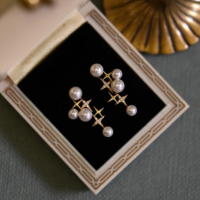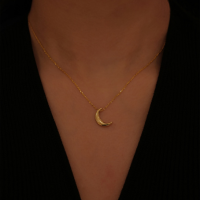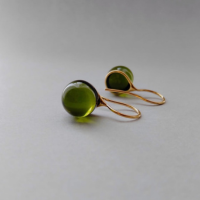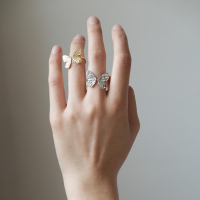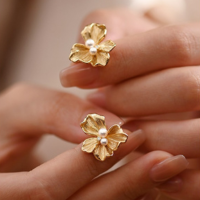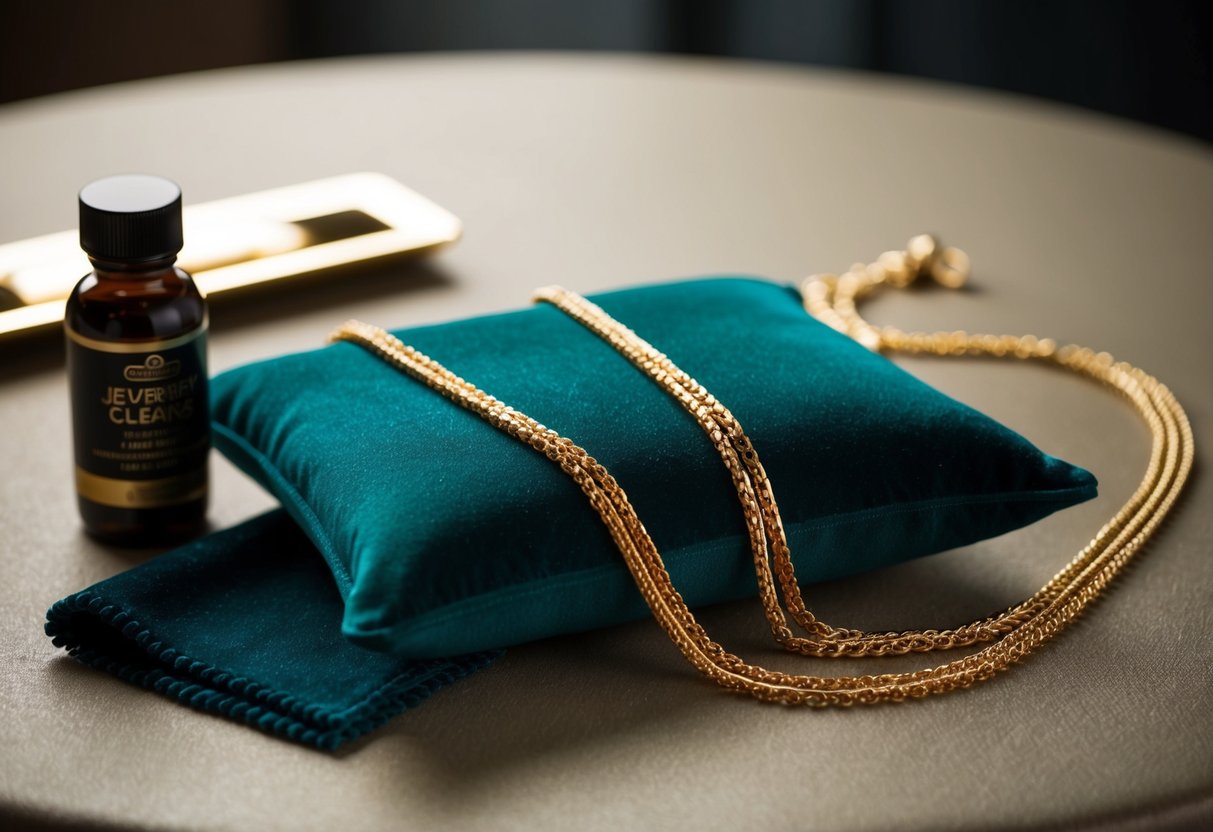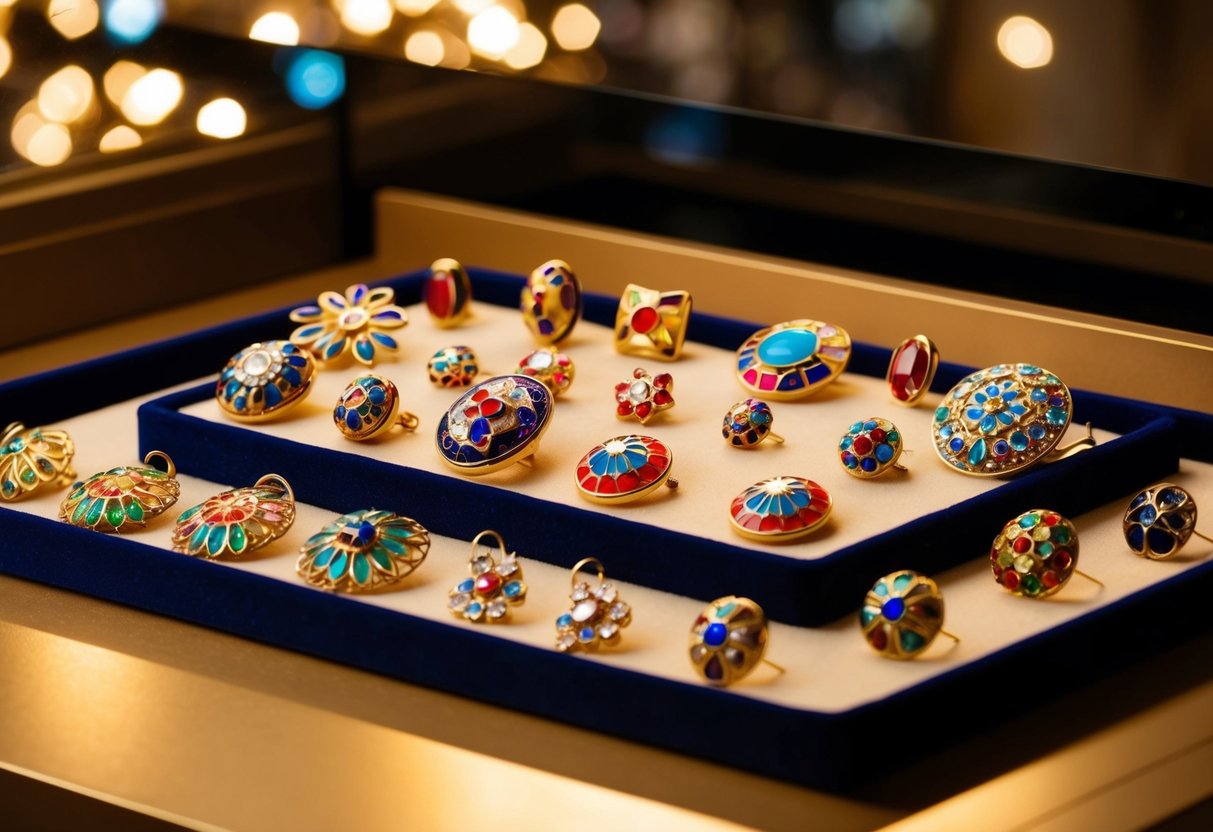
What Is Enamel Jewelry
Check out our personalized jewelry collections! (kids drawing jewelry, coin jewelry, wire jewelry, fingerprint jewelry, handwriting jewelry, and more)
Enamel jewelry is an elegant and colorful choice that can add a unique flair to any outfit. Enamel is a glassy substance fused to the surface of a metal under high heat, creating a stunning, durable finish. It has been a favorite among jewelry lovers for centuries due to its vibrant colors and artistic designs.
We find enamel jewelry in many forms, from necklaces to rings, showcasing different styles and craftsmanship. Each piece is painted or applied with enamel to create a beautiful, smooth finish that lasts. Whether you prefer classic or modern, there is something for everyone in the world of enamel jewelry.
When choosing enamel jewelry, it is important to consider how to care for it to maintain its beauty. While it is quite durable, treating it with care ensures it remains a timeless piece in your collection. Knowing more about enamel jewelry can enhance your appreciation and help you make informed purchases.
Key Takeaways
- Enamel is fused glass on metal to create durable jewelry.
- Enamel jewelry comes in various styles and colors.
- Proper care keeps enamel jewelry beautiful and long-lasting.
What Is Enamel Jewelry?
Enamel jewelry combines decorative art with craftsmanship. It involves melting powdered glass onto metal to create vibrant and colorful designs. Let's explore its beginnings and how it's made.
History and Origins
Enamel jewelry dates back to ancient civilizations. Egyptians used this technique over 3,000 years ago, adorning items with bright colors. As we moved into the Middle Ages, European artisans embraced this art form to embellish religious items and royal accessories.
Throughout history, each region adapted enamel methods. In China, cloisonné became popular during the Ming Dynasty. This style uses metal wire to separate colors, creating intricate patterns.
Materials and Techniques
Enamel jewelry primarily involves metal bases, often gold, silver, or copper. The process starts with cleaning the metal surface. A fine powder made from glass is applied and heated. The powder melts, fusing to the metal and forming a shiny coating.
There are several techniques used in enameling. Cloisonné involves creating compartments for the enamel using metal wires or strips. Champlevé requires engraving the metal and filling the grooves with enamel. Each method gives a distinct look to the finished jewelry piece.
While in traditional settings, artisans handcraft each piece, modern methods allow for more accessible and affordable enamel jewelry options. These new approaches keep the art alive, bringing these colorful pieces to a wider audience.
Types of Enamel Jewelry
Enamel jewelry comes in various styles, each with its own unique process and aesthetic. We'll explore four main types: Cloisonné, Champlevé, Plique-à-jour, and Basse-taille.
Cloisonné
Cloisonné is a popular type of enamel jewelry that uses thin wires to create compartments on a metal surface. We fill these cells with colorful enamel, resulting in vibrant patterns.
The wires are usually made of gold or silver, which adds a touch of elegance. Once the design is set, we apply layers of enamel and fire each layer in a kiln. This process enhances the rich colors and gives a glossy finish.
Cloisonné pieces often showcase intricate patterns, such as flowers or geometric shapes. The depth and detail make each piece feel like a tiny work of art. The combination of precision and creativity gives these pieces their timeless appeal. By integrating different colors and designs, Cloisonné can complement any style.
Champlevé
Champlevé involves carving or etching designs directly into the metal surface to create recessed areas. We then fill these spaces with enamel. This technique allows for bold, colorful patterns that stand out due to the metal's surrounding edges.
Unlike Cloisonné, Champlevé does not use wires to separate colors. Instead, the metal itself forms the dividing lines. This method can reveal the natural beauty of the metal, adding depth to the jewelry.
The firing process melts the enamel into the recesses, resulting in a smooth surface. Artisans typically polish it to achieve a shiny look. The play of color against the metal backdrop can be both striking and subtle, depending on the design. Champlevé is often seen in vintage-inspired or detailed modern pieces.
Plique-à-jour
Plique-à-jour is a delicate and challenging technique. It resembles stained glass, as we apply enamel to cells without a backing. This creates a luminous effect when light passes through.
Crafting Plique-à-jour requires skill, as the enamel must adhere to thin metal strips without support. These pieces are rare due to the difficulty of the process, but the results are breathtaking. Jewelry made with this method captures light beautifully, adding brilliance to the wearer.
We often see floral and nature-inspired designs in Plique-à-jour jewelry. This technique's transparent appeal makes it perfect for earrings and pendants. Though fragile, when crafted well, these pieces are true testaments to the artisan's expertise and creativity.
Basse-taille
Basse-taille involves engraving or etching a design into metal, which is then covered with translucent enamel. The engraved patterns show through the enamel, creating a shimmering effect.
We often choose this method to highlight fine details and texture in jewelry. The interplay between the engraved metal and the enamel's color can add depth and richness to any piece.
Each Basse-taille piece is unique, as the engraved details vary with the artist's design. These pieces are prized for their sophistication and subtle beauty. By adjusting the depth of the engravings, we can control the hue and brilliance of the finished work. These refined pieces are perfect for those who appreciate intricate art and detail in their jewelry.
The Enameling Process
Enamel jewelry is created through a detailed process where color and metal blend beautifully. Each step—from designing the piece to firing and applying finishing touches—brings out unique characteristics.
Designing the Piece
Before applying enamel, we start with an appealing design. Every piece begins with a sketch or model. This initial step is crucial, as it determines the final look.
We often choose durable metals such as gold, silver, or copper for the base. These metals lend themselves well to the enameling process due to their strength and versatility. Once the design is finalized, we prepare the metal by cleaning and shaping it, ensuring it's ready for the next steps.
Applying Enamel
Enamel is a vibrant glass powder that we carefully apply to the metal surface. We often use fine brushes or syringes to achieve precise placement. It's important to apply the enamel in thin layers to prevent cracking.
There are different techniques we can use: cloisonné, champlevé, and plique-à-jour. Each method offers a unique look, allowing us to create pieces ranging from bold to delicate. These techniques require skill and patience to achieve the best results.
Firing the Enamel
Once the enamel is applied, we move on to firing. This step involves placing the enameled piece in a kiln at high temperatures, typically between 1300°F and 1600°F. The heat melts the glass powder, allowing it to fuse with the metal.
We must be precise with timing and temperature to ensure the enamel sets correctly and achieves the desired color. Both underfiring and overfiring can affect the outcome, so careful monitoring is crucial.
Finishing Touches
After firing, our jewelry pieces may need additional work. We polish the surface to remove any rough edges and enhance the shine. Sometimes, we layer more enamel and fire again for more depth or color variation.
Mounting the enamel piece into jewelry settings comes next, securing it firmly. This step finalizes the look and ensures the piece is ready to wear. Each piece of enamel jewelry thus tells its own story through design, color, and craftsmanship.
Caring for Enamel Jewelry
Taking care of enamel jewelry requires proper cleaning techniques, mindful storage, and careful handling to avoid damage. Here, we explore how we can keep our pieces looking their best.
Cleaning and Maintenance
To keep enamel jewelry shining, we should clean it gently. Use a mild soap and water. Avoid harsh chemicals, which can damage the enamel surface. A soft cloth helps to gently wipe away dust and dirt.
For stubborn spots, we can use a soft toothbrush with gentle bristles. By cleaning with gentle circles, we will prevent scratches. Make sure we dry jewelry thoroughly after washing. Moisture can dull the finish and cause discoloration over time. Let's remember to handle with care to preserve the vibrant colors.
Storage Solutions
Proper storage keeps enamel jewelry safe from scratches and chips. We recommend using a soft pouch or a lined jewelry box. This extra protection ensures pieces don’t rub against others.
Separating pieces is key to preventing damage. We should avoid hanging them where they might knock together. If we plan to store for a long period, let's keep them in a cool, dry place. Humidity can cause the metal parts to tarnish, impacting the overall look.
Repair and Restoration
Accidents happen, and enamel can chip or crack. For repair, we should consult a professional jeweler. They have the skills to match colors and reapply enamel to damaged areas. Avoid do-it-yourself fixes as they can worsen the problem.
When restoring older pieces, it's important to keep their original design and color in mind. Always get an expert opinion if unsure about restoration. It's always best to prevent damage through regular maintenance. That way, we keep our enamel treasures looking beautiful and vibrant.
Enamel Jewelry as Art
Enamel jewelry combines vibrant colors with exquisite craftsmanship, making it a true form of art. It showcases the creativity of talented artisans and the vision of contemporary enamel artists, pushing boundaries and delighting jewelry enthusiasts.
Craftsmanship and Creativity
The making of enamel jewelry is a delicate process involving precision and skill. Artisans apply finely powdered glass to metal surfaces, then fire them at high temperatures. This fuses the enamel to create durable, colorful pieces.
Each design reflects the creator’s vision, blending traditional techniques with modern styles. The range of colors achieved through this process is vast, allowing for intricate patterns and unique finishes.
We admire the creativity that goes into designing these pieces. It's fascinating to see how different artists interpret and apply their ideas. A handcrafted enamel piece isn't just jewelry; it's a canvas of artistic expression.
Contemporary Enamel Artists
Contemporary enamel artists are breathing new life into the art form. They experiment with bold designs and innovative concepts. These artists often use new technologies and materials, broadening the range of possible designs.
Some stand out for their ability to balance modern aesthetics with traditional craftsmanship, resulting in striking pieces. Their work attracts attention in exhibitions and galleries worldwide, offering fresh perspectives on what enamel jewelry can be.
We are inspired by contemporary artists who challenge norms. Their creations invite us to appreciate enamel jewelry not just as an accessory but as a form of visual and wearable art.
Purchasing Enamel Jewelry
When buying enamel jewelry, it's important to recognize its true nature and worth. We need to know how to identify authentic pieces and assess their quality and value.
Identifying Authenticity
When we're looking at enamel jewelry, it's crucial to confirm its authenticity. Genuine enamel should have a smooth, glassy finish. Look for any discoloration or uneven surfaces, as these can hint at low-quality craftsmanship or fakes.
We should also check the hallmark or branding on the piece. Reputable sellers usually provide documentation or certification. It's a good idea to reach out directly to the designer or manufacturer if we're unsure about the jewelry's origin. This can often help us confirm its authenticity and get more information about the piece.
Buying from trusted shops or websites with good reviews ensures that we're purchasing genuine enamel jewelry. Be cautious of deals that seem too good to be true, as these may indicate counterfeit products. Taking these steps can help us feel confident in our enamel jewelry purchases.
Assessing Quality and Value
Assessing the quality and value of enamel jewelry involves examining its craftsmanship. High-quality enamel should be smooth without bubbles or cracks. Check how well it’s fused to the metal. A good bond indicates that it was made with care. We can often feel the difference by gently running our fingers over the enamel.
Consider the materials used alongside the enamel. Metals like gold, silver, or platinum generally add more value to the jewelry. Compare prices from several places to understand if the piece offers good value for its quality. Speaking to knowledgeable sellers or appraisers can also provide insights into the piece's worth.
Price is an important factor, too. Higher prices may reflect better materials or intricate designs. However, fair pricing should match craftsmanship and material value. Being thorough in our assessment helps ensure we get a piece that's worth the investment.
Enamel Jewelry Trends
Enamel jewelry is having a moment. Vibrant colors and unique designs are making a splash in both the fashion world and among jewelry collectors. Meanwhile, fresh talent is bringing new ideas and creativity to enamel pieces.
Current Fashion
We've noticed that enamel jewelry is becoming a staple in everyday wear. People love pieces that mix bold colors with simple shapes. Geometric patterns and floral designs are especially popular. These pieces offer a playful way to add a pop of color to any outfit.
Stackable rings have become very trendy. They let us mix and match different colors and styles to create a unique look. Earrings with enamel accents, especially hoops, are also in demand.
Bold pendants featuring enamel artwork stand out as statement pieces. They brighten up any plain outfit and bring a touch of artistry to our jewelry collection. Enamel used in custom pieces adds a special and personal touch.
Up-and-Coming Designers
New designers are continuously catching our attention with innovative enamel creations. They're experimenting with unusual shapes and vibrant colors, pushing the boundaries of traditional enamel jewelry.
One designer to watch is known for using eco-friendly materials. They've created a line of enamel jewelry that is both sustainable and stylish. Another designer is famous for their unique take on vintage-inspired pieces. They incorporate enamel in a way that feels both nostalgic and modern.
Collaboration is also a big theme. Many designers team up with artists to produce limited edition enamel pieces. These collaborations often result in fresh and eye-catching designs that grab our attention.
The excitement around these new talents is encouraging, as they bring fresh perspective to enamel jewelry.
Custom Enamel Jewelry
Enamel jewelry lets us create unique, colorful pieces that perfectly match our personal style. By personalizing designs and working with artisans, we can ensure each piece is special.
Personalized Styles
When it comes to custom enamel jewelry, personalization is key. We can choose colors, shapes, and designs that fit our tastes. For instance, selecting a color palette that matches our wardrobe makes the jewelry versatile.
Adding initials or symbols adds a personal touch. Some of us might prefer a simple monogram, while others love intricate patterns. Birthstones can make a piece feel more meaningful. By incorporating our ideas, we ensure our jewelry tells our story.
Sizes are adaptable too. Whether we want tiny pendants or bold earrings, different sizes suit different moods and occasions. This flexibility lets us express our individuality in style. Custom enamel jewelry becomes an extension of who we are.
Commissioning Artisans
The process of commissioning artisans for custom pieces involves collaboration. We first discuss our vision with skilled craftsmen, sharing ideas about what we want the piece to look like. Sketches can help visualize the design.
Communication is crucial. We must be clear about materials, colors, and timelines, ensuring the final product meets our expectations. Prices vary, so getting a quote early helps us budget wisely.
Each artisan brings their unique flair, making every piece special. By choosing the right artist, we can achieve details that stand out. Craftsmanship and creativity transform our concepts into reality, resulting in jewelry that feels truly our own.
The Symbolism of Enamel Jewelry
Enamel jewelry is more than just beautiful accessories. It carries a wealth of meanings and symbols, often reflecting the rich cultural histories from which it originates.
In many cultures, enamel's vibrant colors symbolize life and vitality. The shine and luster of enamel can represent hope and happiness. These pieces are a perfect way to express our individuality and emotions.
Animal and Floral motifs: Enamel jewelry often features intricate designs. Birds can symbolize freedom and peace, while flowers might stand for growth and beauty. These motifs tell stories and let us express personal connections.
Color and Meaning: Different colors used in enamel work have their meanings. For instance, blue enamel is often associated with loyalty and tranquility. Red can indicate passion and love. These hues allow us to convey feelings and messages without words.
There's an evergreen appeal in enamel jewelry's ability to keep its charm over time. Its timelessness makes it a cherished item, either as a gift or an heirloom. When we choose enamel jewelry, we are not just selecting a fashion piece but also embracing rich stories and deep meanings.
How to Style Enamel Jewelry
Enamel jewelry is a colorful addition to any outfit. It's vibrant and can really stand out. Mixing and matching enamel pieces can add a personal touch to your style.
Bold Colors: Pair bright enamel earrings with a neutral outfit. This makes the colors pop and draws attention to your accessories. We love doing this with simple black or white clothing.
Layering: We can layer enamel bracelets or necklaces for a more dynamic look. Try different lengths and thicknesses to create interest without overwhelming the rest of your outfit.
Patterns: If you're wearing patterned clothes, choosing enamel jewelry in solid colors might be better. This helps avoid clashing and keeps the focus on one standout piece.
Day and Night: Enamel jewelry works well from day to night. For a casual day look, we might choose light enamel pieces. For evenings, try darker, more dramatic colors.
Mixing Metals: Pair enamel with metals like gold or silver. This can create a more sophisticated or edgy look, depending on the combination. Just ensure the colors complement each other.
Occasions: Enamel jewelry is versatile for different occasions. A simple enamel pendant is perfect for a casual outing. For formal events, we might opt for more intricate designs in our jewelry choices.
Frequently Asked Questions
In this section, we answer some common questions about enamel jewelry. We discuss the crafting process, durability, uniqueness, care tips, and pricing factors that make enamel jewelry stand out.
How is enamel jewelry crafted?
Enamel jewelry is created by fusing powdered glass to a metal surface at high temperatures. This process results in a smooth, glossy finish that can add vibrant colors to jewelry. Artisans can layer different colors to achieve intricate designs and patterns.
Can enamel jewelry be considered a lasting choice?
Yes, enamel jewelry can be very durable. Its glass-like coating is resistant to wear and tarnish, making it a long-lasting option when properly cared for. However, it should be protected from hard impacts and drastic temperature changes to maintain its beautiful appearance.
What distinguishes enamel jewelry from other types of jewelry?
Enamel jewelry is distinct due to its wide range of colors and designs. It can achieve brilliant, eye-catching hues that can’t be matched by metal or gemstones alone. The unique artistic possibilities set enamel jewelry apart in the world of fashion and design.
How should enamel jewelry be cared for?
To keep enamel jewelry looking its best, avoid exposing it to harsh chemicals or extreme temperatures. It's advisable not to wear enamel pieces during activities that might cause them to chip or scratch. Storing them separately can prevent damage.
Why does enamel jewelry command a premium price?
The premium pricing of enamel jewelry is due to the skill and time required to create each piece. The delicate process of layering and firing enamel colors requires experienced artisans. Additionally, the unique artistry and vibrant designs contribute to its value.
What unique qualities does enamel bring to jewelry pieces?
Enamel offers rich, vivid colors that can’t be achieved with other materials. The shiny finish and depth of color add a distinctive flair to any jewelry piece. It allows for custom designs and patterns, giving us the opportunity to personalize jewelry in ways that other materials can't.

